Celebrate World Migratory Bird Day (WMBD) with us in our virtual “Birds Connect Our World” edition! Have fun learning about a new migratory bird every day. We have colouring pages, puzzles, activities, and more. Download for free and enjoy nature with your family at home. This week we are also celebrating World Shorebirds Day and Global Shorebird Count (3 to 9 September). 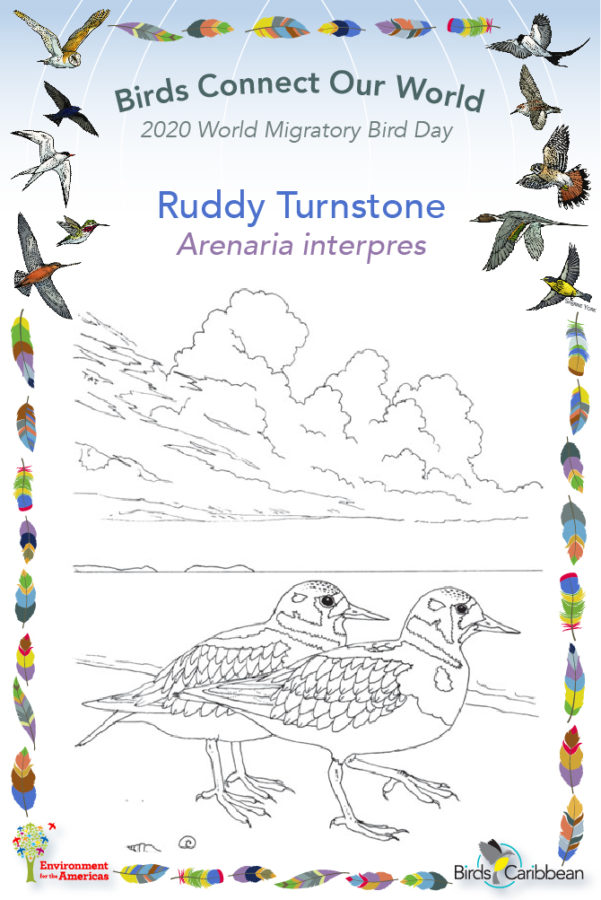
Migratory Bird of the Day: Ruddy Turnstone
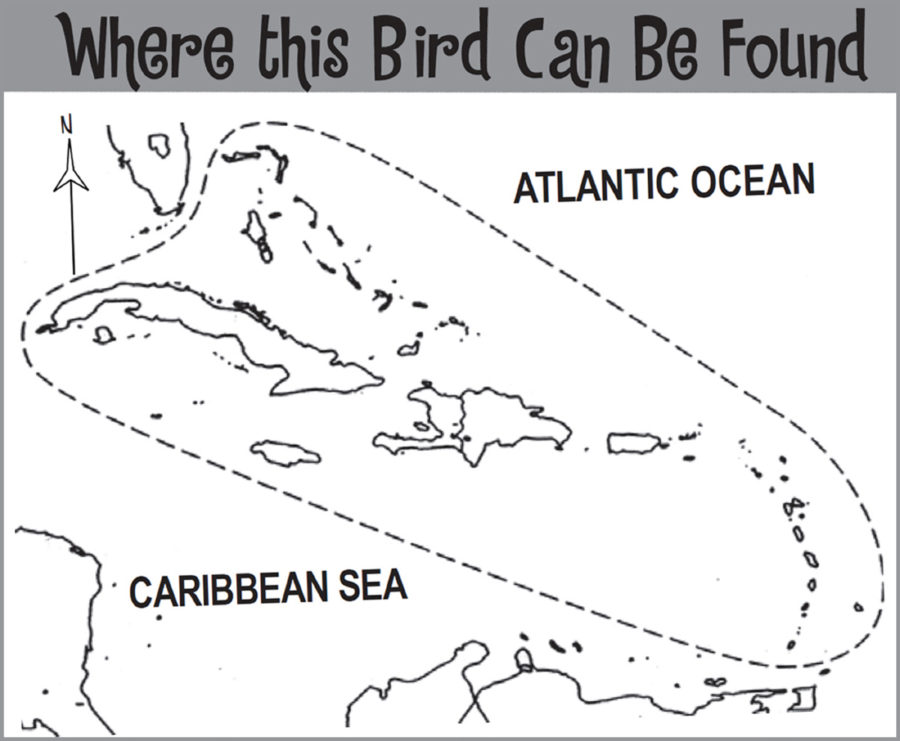 It is easy to see how this shorebird got its name, with its rufous-brown feathers and a habit of turning rocks and stones over with its beak to find food. These charismatic birds can be found feeding in groups in rocky areas of shoreline, mudflats and on beaches. Turnstones are quite striking. In addition to those rufous feathers, they have black or brown patches on their chest and head, a short pointed black beak and rather short bright orange legs. In winter the ‘ruddy’ feathers become duller brown. When Turnstones take flight you can see their brown and white stripey backs. You might also hear their cackling ‘katakak’ call as they take off. Ruddy Turnstones breed mainly in the arctic and fly south for the winter. Like many other shorebirds, they can fly thousands of miles in only a few days when on migration. They normally turn up in the Caribbean in August and can stay until May. During this time, they can be found throughout the Caribbean. As well as beaches they are sometimes found on man-made structures like jetties and piers. Some Turnstones will travel through the Caribbean and go even further, to spend the winter as far south as Argentina. Turnstones feed mainly on snails, crustaceans and insects, but they are not fussy and are even known to sometimes eat fallen fruit. Learn more about this species, including its range, photos, and calls here.
It is easy to see how this shorebird got its name, with its rufous-brown feathers and a habit of turning rocks and stones over with its beak to find food. These charismatic birds can be found feeding in groups in rocky areas of shoreline, mudflats and on beaches. Turnstones are quite striking. In addition to those rufous feathers, they have black or brown patches on their chest and head, a short pointed black beak and rather short bright orange legs. In winter the ‘ruddy’ feathers become duller brown. When Turnstones take flight you can see their brown and white stripey backs. You might also hear their cackling ‘katakak’ call as they take off. Ruddy Turnstones breed mainly in the arctic and fly south for the winter. Like many other shorebirds, they can fly thousands of miles in only a few days when on migration. They normally turn up in the Caribbean in August and can stay until May. During this time, they can be found throughout the Caribbean. As well as beaches they are sometimes found on man-made structures like jetties and piers. Some Turnstones will travel through the Caribbean and go even further, to spend the winter as far south as Argentina. Turnstones feed mainly on snails, crustaceans and insects, but they are not fussy and are even known to sometimes eat fallen fruit. Learn more about this species, including its range, photos, and calls here.
Colour in the Ruddy Turnstone!
Download the page from Endemic Birds of the West Indies Colouring Book. Use the photos below as your guide, or you can look up pictures of the bird online or in a bird field guide if you have one. Share your coloured-in page with us by posting it online and tagging us @BirdsCaribbean @WorldShorebirdsDay #WMBD2020Carib #WorldShoreBirdsDay
Listen to the call of the Ruddy Turnstone
The Ruddy Turnstone’s call is a cackling “katakak” often given as they take flight.
Puzzle of the Day
Click on the images below to do the puzzles. You can make the puzzle as easy or as hard as you like – for example, 6, 8, or 12 pieces for young children, all the way up to 1,024 pieces for those that are up for a challenge!
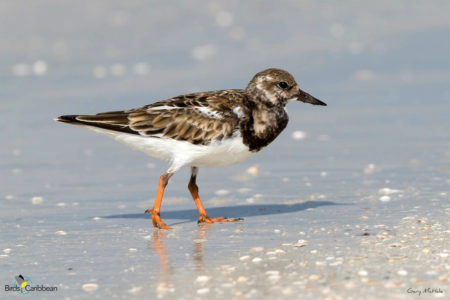
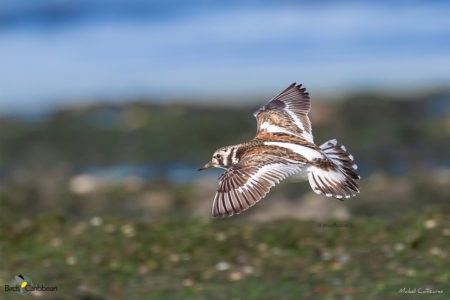
Activity of the Day
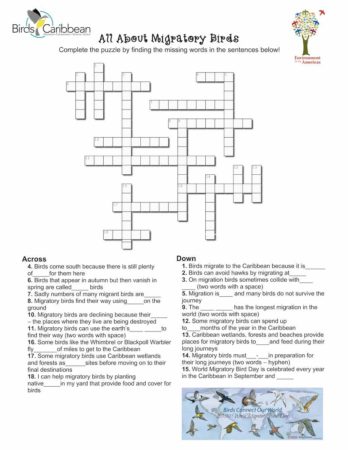 FOR KIDS: Complete our Crossword Puzzle: All about Migratory Birds! How many words can you fill in? Be sure to read the introduction pages from our Migratory Birds of the West Indies colouring book, to help find the clues to the puzzle. And here is a the Answer Key to the puzzle. FOR KIDS & ADULTS:
FOR KIDS: Complete our Crossword Puzzle: All about Migratory Birds! How many words can you fill in? Be sure to read the introduction pages from our Migratory Birds of the West Indies colouring book, to help find the clues to the puzzle. And here is a the Answer Key to the puzzle. FOR KIDS & ADULTS:
- Visit a pond, wetland or nearby beach and see how many different shorebirds and waterbirds you can find and identify. Use a bird field guide or the FREE Merlin bird ID app to help you identify the birds you are seeing.
- If you’re able, do a count of the species that you see – learn more about counting waterbirds and the Caribbean waterbird Census at this link. Learn more about World Shorebirds Day and the Global Shorebird Count (September 3 to 9, 2020) at this link.
- Enjoy the videos below of Ruddy Turnstones! The birds in the first video are in their winter plumage, looking for food amongst the seaweed on a beach in Cuba, in January. The second video shows the feeding method that these birds use and for which they are named—turning over stones, shells, and other items on the beach in search of invertebrate foods in the sand.
- Visit MigratoryBirdDay.org for many more free activities and resources to learn about migratory birds, their threats, and conservation actions you can take.
